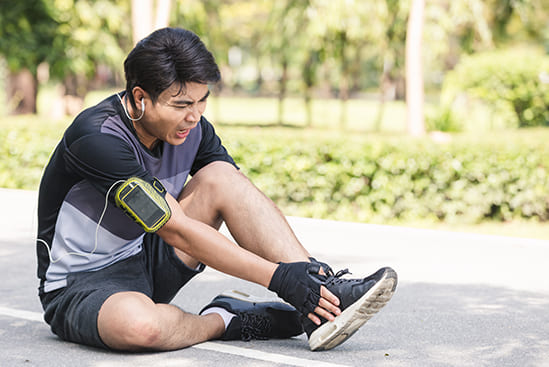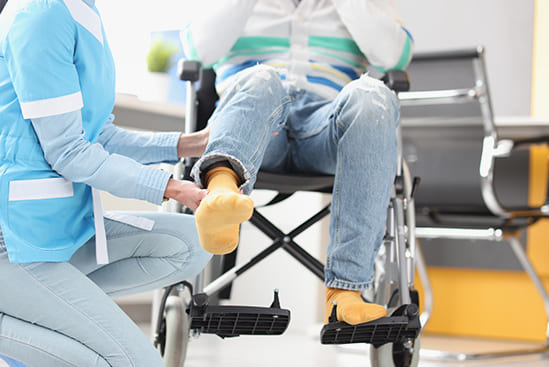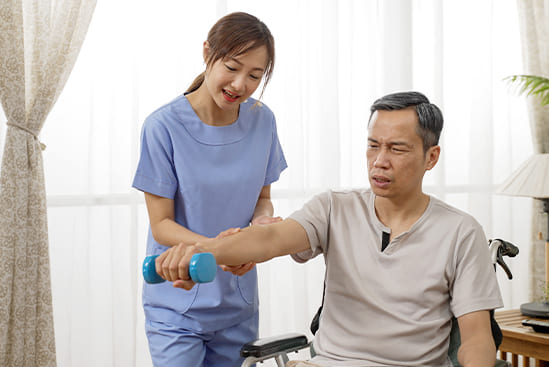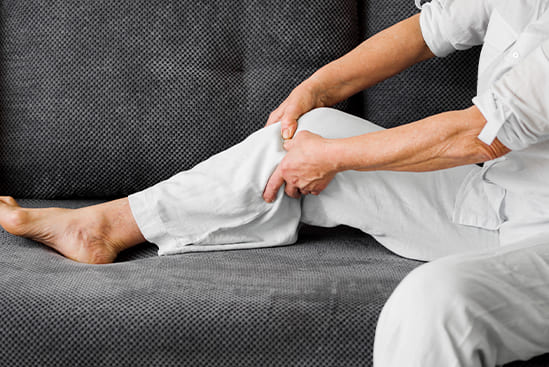
Synapse Physiotherapy
Top Physiotherapy Treatments for Healing & Wellbeing
Physiotherapy, also known as physical therapy, is a non-invasive approach to health and wellness that focuses on restoring physical function, reducing pain, and improving mobility. It is widely recognized for its role in rehabilitation and injury prevention, but it also plays a vital part in promoting overall well-being. The best physiotherapy approach is a holistic one and the scope of it is much broader than most realise.
Because most physiotherapists take a holistic approach, they can also assist you with meeting your physical, mental and emotional needs. A physiotherapist will be able to look at elements such as lifestyle, diet, personal responsibilities and stress and create solutions to improve your overall well-being.
This article explores how physiotherapy treatments contribute to healing and wellness, covering various techniques and their benefits.
Manual Therapy: Hands-On Healing
Manual therapy involves hands-on techniques that manipulate joints and soft tissues. It includes massage, mobilisation, and manipulation aimed at alleviating pain and improving mobility. Common benefits include:
– Increased flexibility: Joint mobilisation helps restore natural movement in stiff joints.
– Pain relief: Soft tissue massage can ease tension in muscles and reduce discomfort.
– Improved circulation: Manual therapy promotes blood flow, which aids in the healing process.
This therapy is commonly used for conditions like back pain, neck pain, and post-surgical rehabilitation.
Exercise Therapy: Movement as Medicine
Exercise therapy is one of the most fundamental aspects of physiotherapy. Tailored exercise programs help patients regain strength, flexibility, and endurance. The goals of exercise therapy include:
– Strengthening muscles: Targeted exercises build muscle strength, which is crucial for supporting joints and preventing further injuries.
– Enhancing flexibility: Stretching exercises help maintain a full range of motion in the joints.
– Improving balance: Balance training is essential, especially for older adults or those recovering from injury, to prevent falls and improve overall stability.
Regular exercise prescribed by a physiotherapist can also boost mental well-being, as physical activity triggers the release of endorphins, the body’s natural mood enhancers.
Electrotherapy: Harnessing Technology for Recovery
Electrotherapy involves the use of electrical currents to stimulate nerves and muscles, aiding in pain relief and tissue repair. The main types include:
– TENS (Transcutaneous Electrical Nerve Stimulation): Provides pain relief by sending low-voltage electrical currents through the skin to disrupt pain signals.
– EMS (Electrical Muscle Stimulation): Stimulates muscles to contract, helping to strengthen weak or atrophied muscles, particularly useful for post-surgical patients.
– Ultrasound therapy: Uses sound waves to promote deep tissue healing, reduce inflammation, and alleviate pain.
These modalities are non-invasive and offer a complement to manual and exercise therapy for a well-rounded treatment plan.
Hydrotherapy: Healing with Water
Hydrotherapy, or water therapy, utilises the buoyancy and resistance of water to facilitate rehabilitation. It is particularly beneficial for patients with limited mobility, as water reduces the stress on joints while allowing for effective movement. The benefits of hydrotherapy include:
– Reduced joint pressure: Water supports the body, reducing the strain on joints during exercises.
– Enhanced range of motion: The natural resistance of water helps strengthen muscles while improving flexibility.
– Relaxation and pain relief: Warm water can soothe aching muscles and reduce stiffness, offering both physical and mental relaxation.
Hydrotherapy is often used in the treatment of arthritis, sports injuries, and post-operative rehabilitation.
Acupuncture and Dry Needling: Ancient Techniques for Modern Healing
Acupuncture, rooted in traditional Chinese medicine, and dry needling, a more recent development, involves the insertion of thin needles into specific points of the body. While the techniques differ slightly, they both aim to relieve pain, reduce muscle tension, and promote healing.
– Pain management: Both acupuncture and dry needling are effective in alleviating chronic pain, such as back pain, migraines, and joint pain.
– Tissue repair: By stimulating blood flow and the body’s natural healing response, these techniques can accelerate recovery.
– Muscle relaxation: Needling releases muscle knots and tension, improving overall mobility and function.
These treatments are particularly helpful for conditions like chronic pain syndromes, tendonitis, and muscular injuries.
Postural Training and Ergonomics: Preventing Injury Through Proper Alignment
Poor posture is a common cause of musculoskeletal pain, particularly in people who spend long hours sitting or standing in one position. Physiotherapists often incorporate postural training and ergonomic advice into treatment plans to help patients avoid injury and discomfort. The key components include:
– Postural correction: Physiotherapists provide exercises and education to improve posture and reduce the strain on the spine and joints.
– Workplace ergonomics: Advice on proper workplace setup, such as chair height, computer screen positioning, and desk layout, helps reduce the risk of work-related injuries.
– Movement education: Learning how to move correctly during daily activities, such as lifting objects or sitting for extended periods, helps prevent strain and injury.
Proper posture and ergonomics play a crucial role in preventing long-term health issues and enhancing overall well-being.
Breathing and Relaxation Techniques: Healing Beyond the Physical
Physiotherapy isn’t just about physical recovery; it also addresses the mental and emotional aspects of healing. Breathing exercises and relaxation techniques are often integrated into physiotherapy programs to help manage stress, anxiety, and pain. Benefits include:
– Improved oxygen flow: Proper breathing techniques enhance oxygen delivery to muscles and tissues, promoting healing and reducing fatigue.
– Stress reduction: Relaxation techniques, such as deep breathing and mindfulness, help lower stress levels, which can otherwise impede recovery.
– Pain management: Controlled breathing can help patients manage pain, particularly during physical therapy exercises or post-surgery.
These techniques offer a holistic approach to healing, addressing both the body and mind.
Conclusion
In conclusion, physiotherapy, as a pathway to healing and wellbeing, is a comprehensive approach to health. Physiotherapy also offers a wide range of treatments that promote both physical and mental well-being. Whether you are recovering from an injury, managing a chronic condition, or seeking to improve your overall health, physiotherapy can provide the support and guidance needed for healing and wellness. By incorporating manual therapy, exercise, technology, and even mindfulness techniques, physiotherapy empowers individuals to regain control over their health and lead a balanced, active life.
Tags :

Back & Neck Pain
Conditions such as stiffness, postural abnormalities and muscle overuse from prolonged desk work at the office or home is more prevalent than most would think. We provide the necessary tools to fix you up and educate you on ergonomics which can unload unnecessary stress.
- Spine & Core Rehabilitation
- Strength & Conditioning Programme
- Pain Management
- Biomechanical Assessment
- Sports Physiotherapy
- Group Class

Sports Injuries
Rolled ankles, jarred knees, impinged shoulders are few conditions in the plethora of sports injuries which can hamper performance and limit our enjoyment of sports. Physiotherapy not only treats the symptoms of these conditions but propels your overall fitness to greater heights.
- Strength & Conditioning Programme
- Pain Management
- Biomechanical Assessment
- Sports Physiotherapy
- Shockwave Therapy
- Group Class

Work Desk Injuries
Conditions such as stiffness, postural abnormalities and muscle overuse from prolonged desk work at the office or home is more prevalent than most would think. We provide the necessary tools to fix you up and educate you on ergonomics which can unload unnecessary stress.

Pre-Post-Surgical Conditions
Surgery involves going through preparation both before and after. Physiotherapists play a vital role in getting your body ready for surgeries with circulatory, breathing and strengthening exercises. After the procedure, let us be there for your recovery and rehabilitation, taking it one step at a time.

Scoliosis & Postural Abnormalities
The way we stand, sit, walk and sleep has influence over our posture and the overall balance of muscles controlling its alignment. A comprehensive screening can be done by our physiotherapists to detect abnormalities, which we will aid in correcting.

Neurological Conditions
Neurological disabilities such as stroke, nerve compression and neuropathies can be barriers for patients to live life to its fullest. We at Synapse are committed to help you overcome these hurdles by ensuring functional mobility and quality of life is at its optimum by providing the right treatment and exercises.

Osteoarthritis & Rheumatism
Joint degeneration and inflammation happens as the human body grows older, but that does not mean our way of life degenerates as well. Relief your joint pains with a joint effort together with your physiotherapist, who will provide pain-relief treatments and prescribe exercises for your wellbeing.

Conditions Relating To Elderly
Common conditions in the older age population include hips & knee pain, back & neck pain, osteoarthritis, rheumatism, fear of falling and many more. Aging and degeneration of bodily function is inevitable, but here at Synapse, we will help you live the best of your life.

Home Physiotherapy
We understand that some conditions or injuries can make it difficult to receive rehabilitation at our clinic be it mobility or transportation issues. Our objective is to provide you with the same high-quality physiotherapy services at home that you would receive in-clinic.
